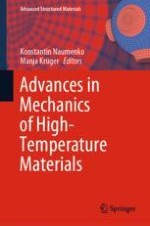2020 | OriginalPaper | Chapter
Computational Assessment of the Microstructure-Dependent Thermomechanical Behaviour of AlSi12CuNiMg-T7—Methods and Microstructure-Based Finite Element Analyses
Authors : Carl Fischer, Axel Reichenbacher, Mario Metzger, Christoph Schweizer
Published in: Advances in Mechanics of High-Temperature Materials
Publisher: Springer International Publishing
Activate our intelligent search to find suitable subject content or patents.
Select sections of text to find matching patents with Artificial Intelligence. powered by
Select sections of text to find additional relevant content using AI-assisted search. powered by
